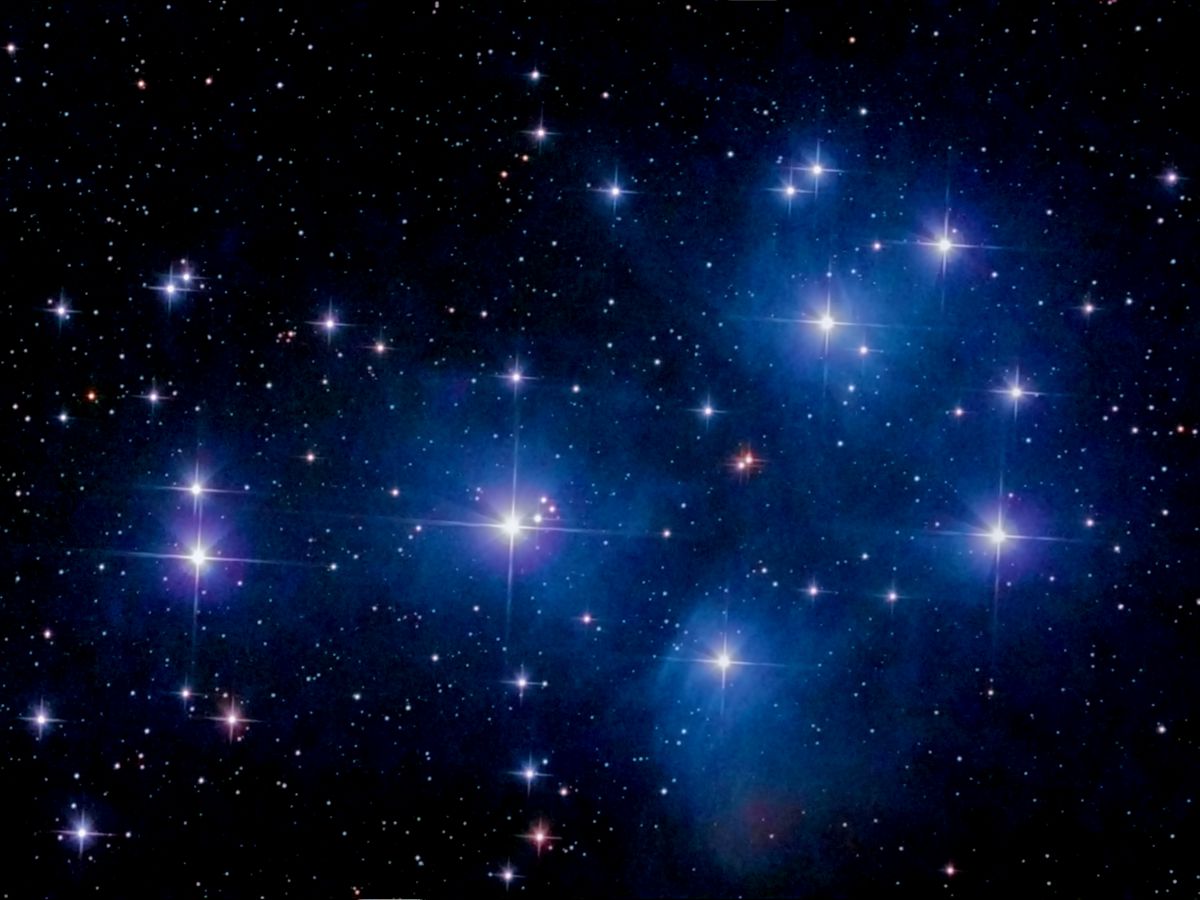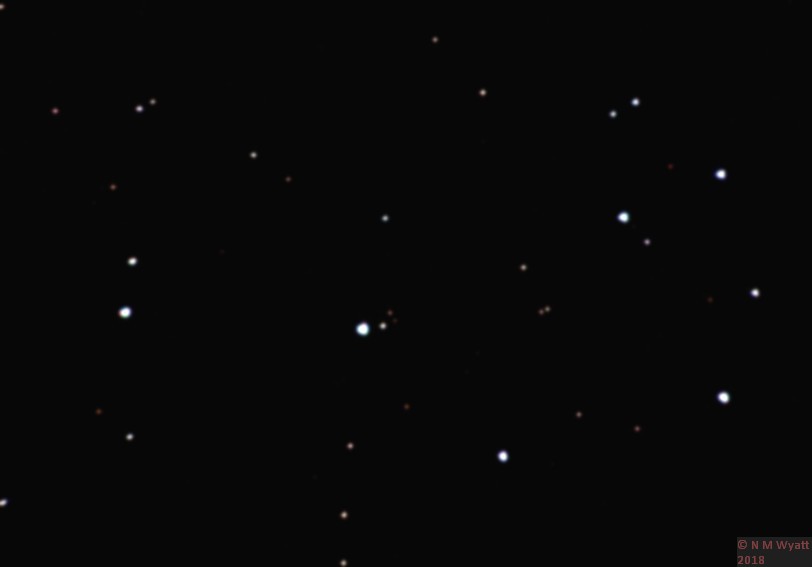The Pleiades is probably the most well-known of the Messier objects, because it is so easy to see with the naked eye. It lies between the constellations of Perseus, Taurus and Aries. At first sight it may appear as a 'fuzzy patch' but once your eyes are dark adapted you can see it is made up of several bright stars.
The Pleiades star cluster, M45
Depending on your eyesight and local conditions most people can see 5-14 stars, and binoculars show vastly more. Galileo drew 36 stars that he could see in the cluster through his primitive telescope, and by the mid-nineteenth century 64 stars had been accurately mapped. Also called the 'Seven Sisters' it has many other names in different cultures around the world.
The Pleiades comprises is a close, irregular cluster of hot, young stars which are passing through and illuminate a cloud of interstellar dust, this creates the effect of misty blue haloes around the stars when seen through a telescope. The blue nebulosity is called the Merope Nebula after the star at the bottom of the group in the picture below.
It is not difficult to get a reasonable picture of the Plieades using a long lens, although a tracking mount and exposures of about a minute or more are needed to capture the nebulosity. This first picture shows the Plieades taken with a bridge camera.
This image above is a stack of about ten exposures of 90 seconds each taken with a DSLR. In contrast, the picture below is taken with a bridge camera, with only about a 1-second exposure. Stacking several dozen images like this could start to bring out some of the nebulosity and fainter stars.

